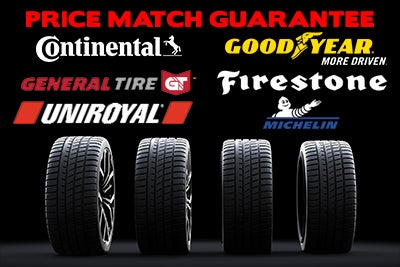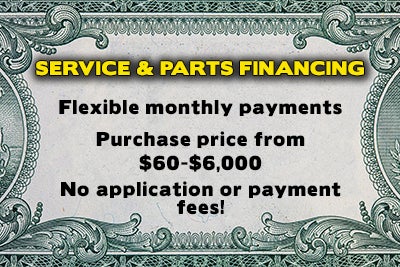Brake Service in Seneca, PA
Brake Service
Service Sub-Navigation
Hearing Brake Noise?
Having reliable stopping power is essential for a safe and successful driving experience. When you're in need of brake service, our Certified Service experts at Northpointe CDJR are here to help. We can recommend top-quality ACDelco Gold (Professional) or genuine Stellantis Original Equipment brakes to ensure your peace of mind on the road.
Determining the Time for Brake Repair or Replacement
Sometimes, your vehicle's brakes will kindly alert you when there is trouble. Squealing noises, chirping sounds, and grinding are gentle indications that brake repair is required.
Brake Pad Warning Indicator
Genuine Stellantis brake pads are designed with a handy little piece of metal attached to them. This clever feature acts as a warning indicator, letting you know when it's time to replace the brake pads. Just listen for a high-pitched sound when you apply the brakes, and you'll know it's time for some brake service. It's like having a helpful friend looking out for you and your brakes!
Brake Service Specials
Tire Price Match Guarantee
We Will Match Any Advertised Tire Price!
Offer Expires 5/31/2024
See your Service Advisor for details. Coupons not valid with any other offer. Must present coupon at time of purchase. Coupon Does not apply to other purchases.
Service & Parts Financing
Flexible Monthly Payments
Purchase price from $60-$6,000. No application or payment fees!
Offer Expires 5/31/2024
See your Service Advisor for details. Coupons not valid with any other offer. Must present coupon at time of purchase. Coupon Does not apply to other purchases.
3485 State Route 257, Seneca, PA 16346
Service: 814-917-3071
more info
Are Your Brakes Signaling a Problem?
Sometimes, your vehicle's brakes might give you a heads up when something's not right. You might hear whistling noises, chirping sounds, or even grinding, which could be signs that your brakes need some attention. It's important to be on the lookout for these signs of reduced system performance. Here are a few things to watch out for:
- Pulsing brake pedal or shaking steering wheel when brakes are applied
- Soft brake pedal
- Squealing or grinding noise when brakes are applied
- Unusual odor at the wheel area
- Excessive brake dust on wheel
Many genuine Stellantis vehicles are equipped with brake pads that have a small, thin piece of metal acting as a helpful warning indicator. When the pad material wears down and it's time to replace the brake pads, this device makes a friendly chirping noise upon brake application. It's a way of letting you know that it's time to take care of your brakes and get them serviced.
Brake Service FAQ
Genuine Stellantis Brake pads are equipped with wear indicators that produce a squealing noise when the brakes are almost worn out. The noise may be present with or without the brake pedal applied, but when noise is heard from the wear indicator, the brake pads should be replaced as soon as possible. Wear indicators are set to create noise when there is around 2 mm of brake pad friction material thickness remaining. In the case of assessing pad wear through inspection, pads should be replaced at or before 2 mm thickness is reached.
Rotors should be replaced before they reach this minimum thickness and should not be turned below this.
No worries! If you don't experience any conditions like pedal pulsation or steering-wheel vibration while braking, and if the brake rotor is at least 1 mm thicker than the discard thickness, then there's no need to turn or replace it. You're good to go!
No, but it is a good idea to check the condition of your rotors at every tire rotation.
Brake-pedal pulsation and other conditions, such as steering-wheel shaking while braking, are caused by thickness variation in the brake rotor. This results in pedal pulsation and "brake torque variation," leading to steering wheel and seat vibrations. Disc warping is not the cause of brake pulsation, but excessive temperatures or improper installation can contribute to rotor thickness variation. To fix this, the recommended approach is to turn and/or replace the brake rotors to eliminate the thickness variation.
Brake squeal is a result of high-frequency vibrations in brake components caused by the friction process. Eliminating brake squeal requires extensive engineering and attention to detail. To ensure factory-original performance, it is recommended to use original equipment brake pads and rotors as they are designed as a complete system. When brake squeal occurs, it may indicate damage or excessive wear on components such as brake pads, noise-damping shim, or rotor friction surface.
In addition, it should be recognized that high-performance and track-capable brake systems using high-performance pad materials may be at higher risk for producing brake squeal noise, even when no damage to the components is present.
Brake pad life varies depending on driving habits, vehicle usage, and operating environment. In very severe use, brake systems can provide 20,000 to 25,000 miles of pad life, while in average use, they can last 40,000 to 60,000 miles. Factors that reduce pad life include frequent heavy braking, high temperatures, driving with a heavy load, and harsh environments.
Pads with higher metal content have abrasive friction, directly interacting with the brake rotor surface. This generates more brake dust and reduces rotor life. Non-asbestos organic pads (ceramic pads) used on genuine Stellantis vehicles in North America create a transfer film, acting as a cushion between the pad and rotor, protecting against wear.
Brake dust is a common occurrence in most brake systems, but it is more pronounced in metallic pads and high-performance systems. It consists of debris from both the brake rotor and brake pads. Pads that wear the rotor aggressively will generate more dust.
Brake rotors designed for the same vehicle may appear similar, but there can be variations in internal cooling vane design, plate thickness, and material specification. Extensive analysis and testing are conducted to optimize geometry, minimize thermal distortion, reduce noise, and maximize cooling. Material selection is also crucial, as it impacts noise, friction, and wear properties.







